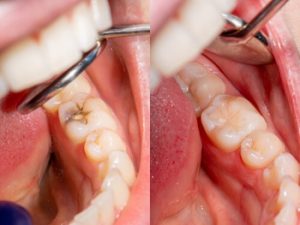If you’ve been told you need a root canal, one of the first questions on your mind is likely the cost. Many people delay treatment simply because they don’t know what to expect. How much does a root canal cost? Understanding how pricing works, what influences it, and what the procedure involves can help you move forward with confidence. This guide gives you a complete overview of the root canal journey, including the treatment itself, the price points, and the benefits of acting early.
What Is a Root Canal and How Much Does It Cost?
Root canal treatment focuses on clearing infection from within a tooth while keeping its outer structure intact. This procedure helps save a tooth that might otherwise require removal due to decay or trauma. In Australia, the cost can vary depending on the tooth’s position in the mouth and the extent of the damage. Treating front teeth tends to be more affordable than treating molars, as they are easier to reach and simpler to restore. Root canal treatment typically starts from around $900, but more complex cases can cost more. Consulting your dentist will give you a clearer understanding of your expected costs and how treatment can protect your natural tooth.
Which Details Play a Role in Root Canal Pricing?
Understanding why prices vary can help you feel more prepared. Different teeth, dentists, and even the type of clinic all play a role in the final cost.
 Location Of The Affected Tooth
Location Of The Affected Tooth
The position of the affected tooth plays a large role in cost. Front teeth are usually less complex to treat because they often have just one root canal. Molars, in contrast, may have three or more canals that require additional time and precision. Treating a molar often involves more intricate steps, which is reflected in the final pricing. Teeth in hard-to-reach areas may also require longer chair time. In some cases, additional imaging is needed to map the full root system, which may influence the cost.
Dentist’s Experience And Training
The level of a dentist’s experience can influence the cost of your root canal. Those with advanced training in endodontic treatment may use more refined techniques or technologies. While this may raise the procedure cost, it also helps ensure a thorough and efficient outcome. Experienced dentists can often manage more complex infections or challenging anatomy with greater accuracy.
Dentists who routinely handle difficult cases may also offer tailored solutions that improve long-term success. Their techniques can reduce the likelihood of retreatment later on.
Complexity Of The Infection
Not all infections are alike. If the affected tooth has calcified roots, deep decay, or an older filling, the root canal process may take longer. Treating a dying tooth with several complications or a severely infected area could involve extra steps. These cases often require careful handling of diseased pulp and additional appointments, which may raise the overall cost. Teeth with hidden canals or blocked roots often require more time to clean and seal fully. Infection that has spread beyond the tooth may also lead to higher treatment complexity.
Type Of Dental Clinic
Every dental clinic has its own pricing structure. Some use advanced imaging tools and newer materials that influence the final cost. Clinics with more comprehensive dental care services may also offer extended hours or comfort options that factor into pricing. The equipment used and the overall experience provided can add value to your visit. Some clinics bundle root canal treatments with other services, while others charge for each item separately. Clinics located in central or high-demand areas may also reflect location-based pricing differences.
Need For Additional Procedures
Your treatment might not end with cleaning the infected area. A dental crown is often needed to protect the treated tooth and restore its strength. If the tooth has been weakened by repeated dental procedures, further support might be necessary. These additional procedures can increase the root canal treatment cost but are essential for long-term results. Post build-ups, core fillings, or extra imaging may be recommended before placing a crown. If the surrounding teeth have shifted, additional adjustments may also be required.
Private Health Insurance Policy
Your private health insurance policy can also influence how much you end up paying. Depending on your cover, part of the root canal procedure or crown may be included.
Some policies have waiting periods or yearly limits, which can affect the amount covered. It’s helpful to review your private health insurance cover early and confirm the details before beginning treatment.
How Is a Root Canal Performed to Save Your Tooth?
Knowing how the treatment works from start to finish can help reduce anxiety. Here’s what happens during a typical root canal.
 Initial Consultation And Diagnosis
Initial Consultation And Diagnosis
It all begins with your initial treatment visit. X-rays, along with a thorough examination, help the dentist determine the condition of the pulp and the presence of infection. This is the step where a personalised treatment plan is created based on your specific situation.
The dentist may also check the tooth’s sensitivity to temperature or pressure. This visit helps confirm whether the tooth can be saved through treatment. You will receive a clear explanation of the root canal procedure so you can understand each step ahead of time.
Preparation For Treatment
Before the root canal begins, your dentist will make sure the area is fully numb. A small sheet is used to keep the tooth dry and clean during the procedure. If you have tender gums or sensitive teeth, your dentist will ensure everything is comfortable before moving forward.
This step is important to create a safe and sterile environment for the procedure. The tooth is isolated so no saliva or bacteria interferes during treatment. Your dentist may also take a second X-ray to guide the work.
Cleaning The Infected Area
To reach the infected pulp, the dentist carefully opens the crown of the tooth during the procedure. The inside of the tooth is cleaned carefully to remove any harmful bacteria and tissue fibres. Every root canal inside the tooth is shaped to prepare for sealing. This step is crucial to prevent further infection or pulp infection from developing.
Rotary tools or hand files may be used to clean and shape the canals. The cleaning process is done gently and thoroughly to ensure no infected tissue remains. Saline or disinfecting liquid is often used to flush out debris.
Sealing The Tooth
Once cleaned, the hollow spaces are sealed with a safe material. This prevents bacteria from entering and protects the internal structure. A temporary filling is placed to keep the area closed until the final restoration is ready. Sealing stops germs from returning to the treated area. It also helps the tooth hold its shape until a crown is placed. You may be asked to return for the final step within a week or two.
Final Restoration
To complete the procedure, a dental crown is placed on the tooth. This crown restores strength and ensures the treated tooth can handle regular chewing and pressure. It also helps maintain alignment with adjacent teeth and protects against future damage. The crown also improves the look of the tooth if it has darkened after treatment. Different materials are available depending on the location of the tooth. A well-fitted crown can last many years with proper care.
What Long-Term Advantages Does Root Canal Therapy Offer?
Beyond removing discomfort, a root canal offers lasting benefits. Here’s how this treatment helps protect your dental health and your smile.
Preserves The Natural Tooth
One of the most valuable outcomes of root canal therapy is that it allows you to keep your natural tooth. This means you can avoid artificial replacements and maintain the shape of your bite. The treatment helps preserve tooth structure and keeps your mouth functioning as it should.
Holding onto your own tooth helps maintain jaw stability over time. It also supports clear speech, especially for teeth involved in pronunciation. Keeping the natural tooth eliminates gaps that can lead to the shifting of surrounding teeth. This simple act of preservation benefits both comfort and appearance.
Prevents Tooth Loss And The Need For Implants
Treating an infected tooth early reduces the risk of tooth extraction. Losing a tooth often leads to other issues, including the need for dental implants or bridges. A successful root canal prevents these outcomes, helping you avoid more invasive dental treatments later on.
It also saves you from the longer timelines and higher costs linked with tooth replacement. Protecting the original tooth avoids unnecessary strain on adjacent teeth. Preventing extraction supports long-term bite alignment. Early action also means fewer appointments compared to replacing a missing tooth.
 Maintains Overall Oral Health
Maintains Overall Oral Health
If an infected tooth is left unaddressed, it can cause further complications, such as spread to neighbouring teeth or deeper tissue. This can affect your oral health and increase your risk of new problems. A root canal stops this process and protects your smile from future issues.
By removing the infection source, the treatment helps prevent gum inflammation and bone loss. It plays a part in reducing harmful bacteria in the mouth. Protecting one tooth also preserves the balance across your entire dental arch. Good oral health contributes to better overall wellbeing, including digestion and speech clarity.
Restores Comfort And Function
A root canal brings relief from severe tooth pain or discomfort. Once healed, the treated tooth works like any other. You can eat, speak, and smile without worrying about irritation or pain from the damaged area.
Daily tasks like chewing tougher foods become easier and more comfortable. You no longer need to avoid one side of your mouth while eating. Restoring full function also means you can bite with confidence. Comfortable teeth contribute to a better quality of life in both personal and social settings.
Don’t Wait to Treat Tooth Pain
The cost of a root canal depends on your tooth’s condition, treatment complexity, and follow-up care like a crown. Private health insurance may reduce costs, but checking your policy in advance helps avoid surprises. Acting early prevents tooth loss, protects nearby teeth, and relieves discomfort. Treating deep tooth decay or infection promptly supports long-term oral health. If you notice sensitivity or pain, seek advice without delay. Root canal therapy restores both comfort and confidence. To find out more or schedule your personalised consultation, call our clinic today on (02) 9159 6237. Let’s help you protect your smile with the right care.
Note: Any surgical or invasive procedure carries risks. Before proceeding, you should seek a second opinion from an appropriately qualified health practitioner.
References
https://www.healthdirect.gov.au/root-canal-treatment
https://www.webmd.com/oral-health/root-canals


 Location Of The Affected Tooth
Location Of The Affected Tooth Initial Consultation And Diagnosis
Initial Consultation And Diagnosis Maintains Overall Oral Health
Maintains Overall Oral Health